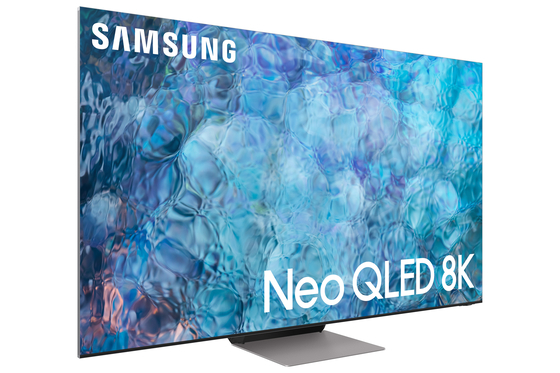![Competition in the mini LED TV market is intensifying. Neo QLED TV released by Samsung Electronics. [사진 각 사]](https://i0.wp.com/pds.joins.com/news/component/htmlphoto_mmdata/202103/04/9a5a82ba-9cfb-4e02-b75a-32c14c573e37.jpg?w=560&ssl=1)
Competition in the mini LED TV market is intensifying. Neo QLED TV released by Samsung Electronics. [사진 각 사]
“We will achieve global No. 1 for 16 consecutive years, focusing on’Neo QLED TV’, the hero of the year (Hero).”
Samsung Electronics’Neo QLED TV’
Excellent contrast ratio and brightness expression
Clear black objects in a black background
LG also launches’QNED TV’ next month
On the 3rd, Samsung Electronics held a Neo QLED TV experience event at’Samsung Delight’, a large store in Seocho-gu, Seoul. Neo QLED TV is Samsung’s’Susung Card’ this year, which has been the No. 1 in the world TV market since 2006.
Regarding the Neo QLED TV, Samsung Electronics explains that it is a’super premium’ product that has evolved one step further from the existing QLED TV. Both TVs are liquid crystal display (LCD) TVs that use light-emitting diodes (LEDs) in the backlight unit (BLU). Neo QLED is classified as a’mini LED TV’ by applying’Quantum Mini LED’, which is about a quarter smaller than existing LED devices. Samsung Electronics explained, “The screen is clear and bright as it is used as a light source by putting an LED device of only 100 to 200 micrometers (㎛) in the same area.” It also features sophisticated color expression by adjusting the brightness of the quantum mini LED in 4096 steps (12 bits).
![Competition in the mini LED TV market is intensifying. LG Electronics' QNED TV, which will be released as early as next month. [사진 각 사]](https://i0.wp.com/pds.joins.com/news/component/htmlphoto_mmdata/202103/04/9289ad89-34b0-4ab0-a3c0-6840b349826a.jpg?w=560&ssl=1)
Competition in the mini LED TV market is intensifying. LG Electronics’ QNED TV, which will be released as early as next month. [사진 각 사]
Mini LED TV is considered as the’next generation display’ technology. In addition to Samsung Electronics, LG Electronics, Sony (Japan), TCL, Hisense, and Xiaomi (China) have entered the mini LED TV market. Market research firm Omdia predicted 3 million units of mini LED TV sales this year. As it is a new technology, there is no clear leader yet. Samsung Electronics is planning to dominate the mini LED TV market with Neo QLED.
Samsung Electronics introduced the superior quality of Neo QLED through a comparative experience on the day. Displaying the same image by placing other companies’ organic light-emitting diode (OLED) TVs and Neo QLED TVs side by side, he emphasized that “Neo QLED has superior contrast ratio and luminance (brightness) expression compared to competitors’ products, so it is expressed like 3D (3D).” did. In addition, after playing the PlayStation 5 game, he said, “On other TV monitors, the appearance of moving black objects on a black background was not well distinguished, but on Neo QLED, it is clearly revealed.” However, regarding the comparison target, a Samsung Electronics official said, “It is not an LG Electronics product.” In design, it is noticeable that the border (bezel) is reduced. The 8K top model implemented a full screen with few bezels. Based on the 8K resolution, the price is 13.8 million to 19.3 million won for 85 inches, 8.89 million to 13.8 million won for 75 inches, and 5.89 million won for 65 inches. The 4K resolution ranges from 2.29 million won to 9.59 million won for 50 to 85 inches products. In Korea, it started selling that day.
On this day, Samsung Electronics unveiled a 99-inch micro LED TV, including Neo QLED, new lifestyle TVs such as’The Frame’,’The Serif’, and’The Vertical’ reflecting the individuality and taste of the consumer. Jong-hee Han, head of Samsung Electronics’ video display business division (president), said, “I will create a new value for TV this year, and continue to reinforce eco-friendliness and accessibility to realize the vision of’Screens for All’.” Said.
LG Electronics will release’QNED TV’ with mini LED as early as next month. QNED TV also upgraded the brightness and contrast ratio by closely putting mini LEDs into the backlight. Based on the 86-inch 8K resolution product, about 30,000 mini LEDs are mounted. The number of local dimming zones that influence the contrast ratio reaches about 2500.
Reporter Park Hyung-soo [email protected]
![]()
